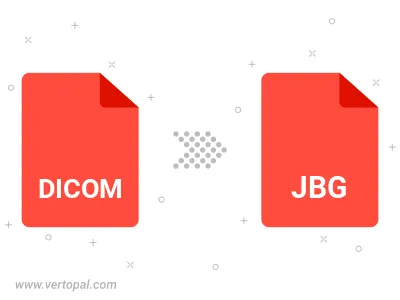Convert DICOM to JBG
Convert DICOM images to JBG format, edit and optimize images online and free.

DICOM, or Digital Imaging and Communications in Medicine, is a standardized file format used in the field of medical imaging. It facilitates the storage, exchange, and transmission of medical images and related information between devices from different manufacturers, ensuring interoperability in healthcare environments. Originating from efforts by the National Electrical Manufacturers Association (NEMA) and the American College of Radiology (ACR) in the 1980s, DICOM's evolution has played a crucial role in the development of advanced medical imaging technologies and systems.
The JBG file extension stands for Joint Bi-level Image Group, a format developed for efficient lossless compression of binary images, primarily used in fax transmissions. Introduced by the Joint Bi-level Image Experts Group, JBG files store 1-bit raster images and offer superior compression compared to older standards like CCITT Group 3 and 4. Although initially popular for fax machines, the format has largely been superseded by JBIG2, which provides even better compression.
Click the Choose File button to select the DICOM file.
For advanced customized conversion, use DICOM to JBG tools and click Convert.
Wait a couple of seconds for the converter to do the hard job, then download your JBG file.

To change DICOM format to JBG, upload your DICOM file to proceed to the preview page. Use any available tools if you want to edit and manipulate your DICOM file. Click on the convert button and wait for the convert to complete. Download the converted JBG file afterward.
Follow steps below if you have installed Vertopal CLI on your macOS system.
cd to DICOM file location or include path to your input file.Follow steps below if you have installed Vertopal CLI on your Windows system.
cd to DICOM file location or include path to your input file.Follow steps below if you have installed Vertopal CLI on your Linux system.
cd to DICOM file location or include path to your input file.